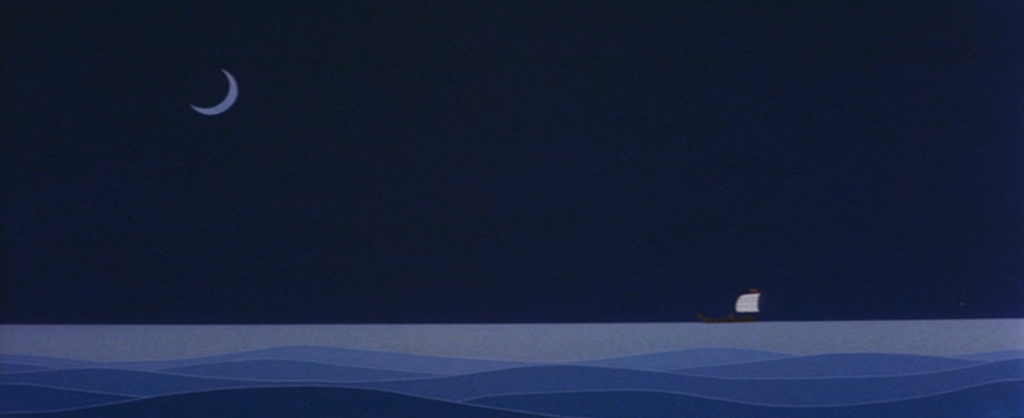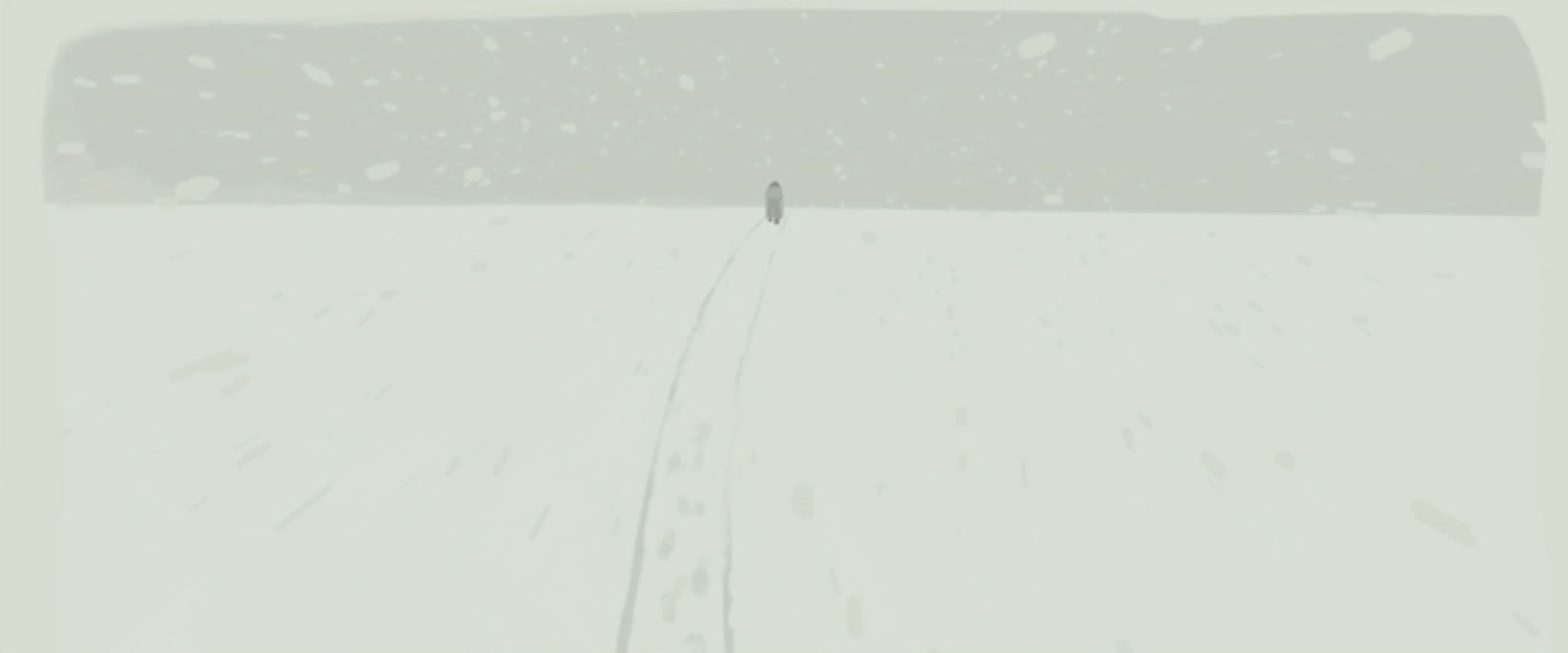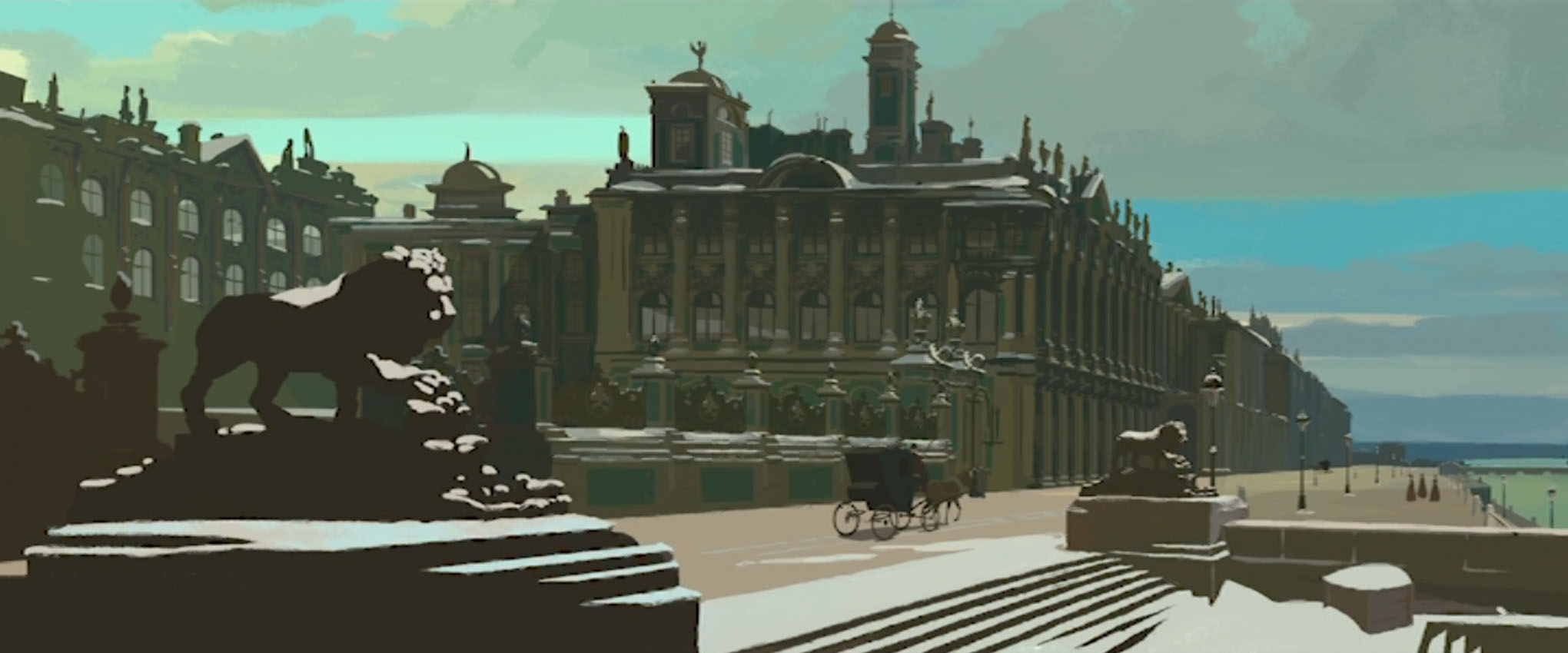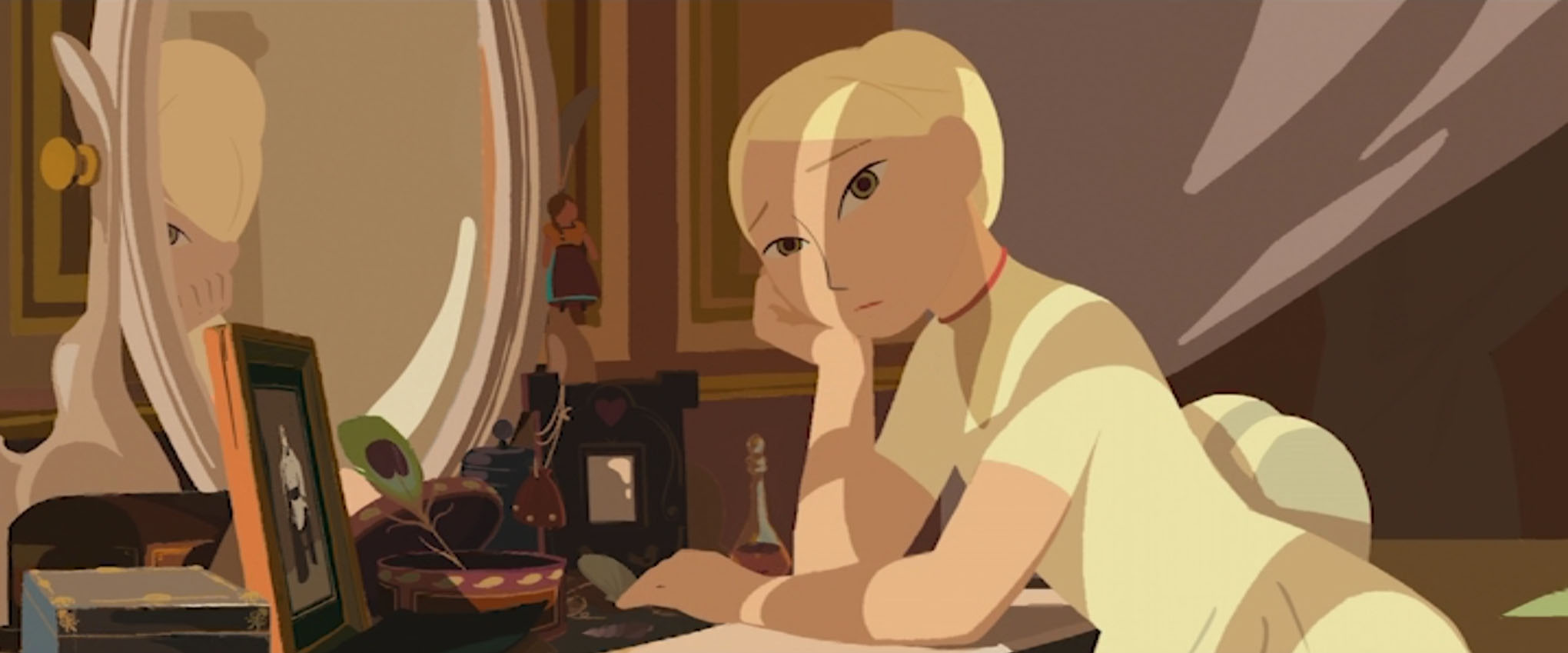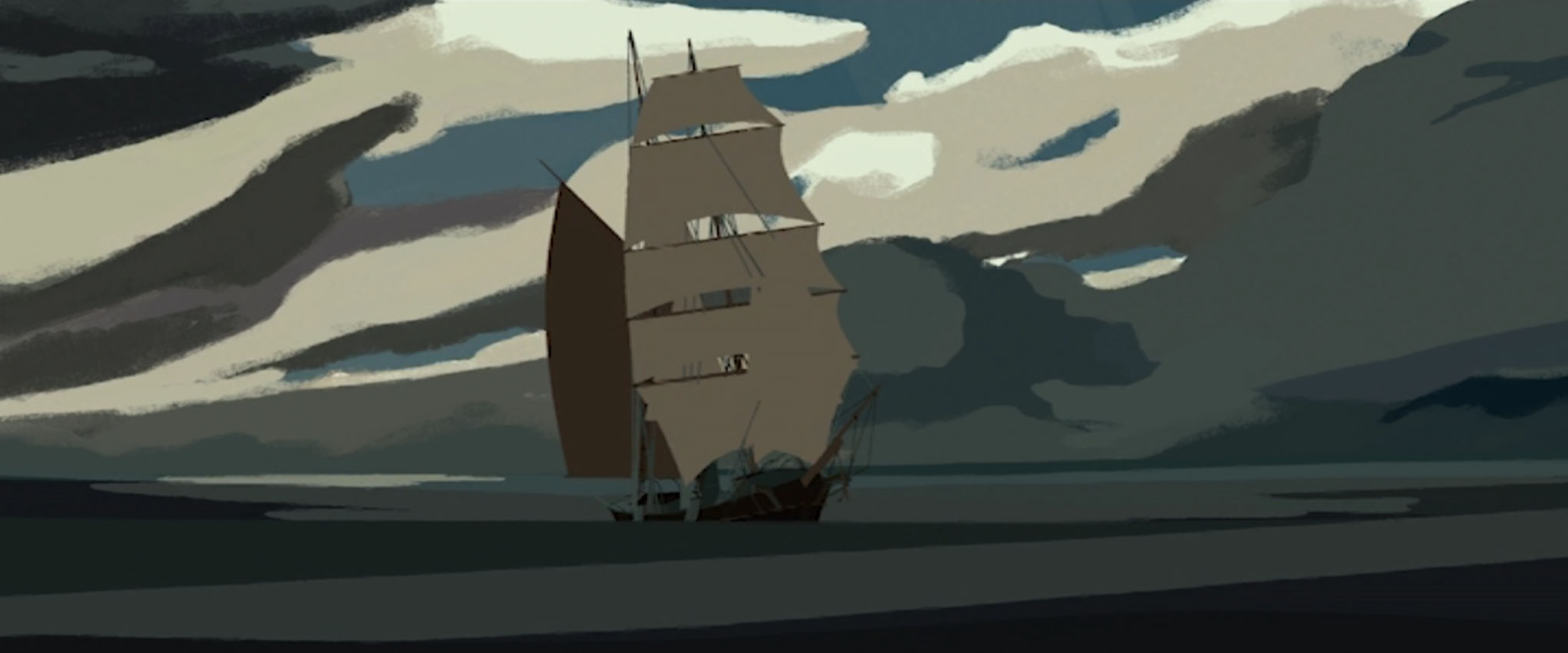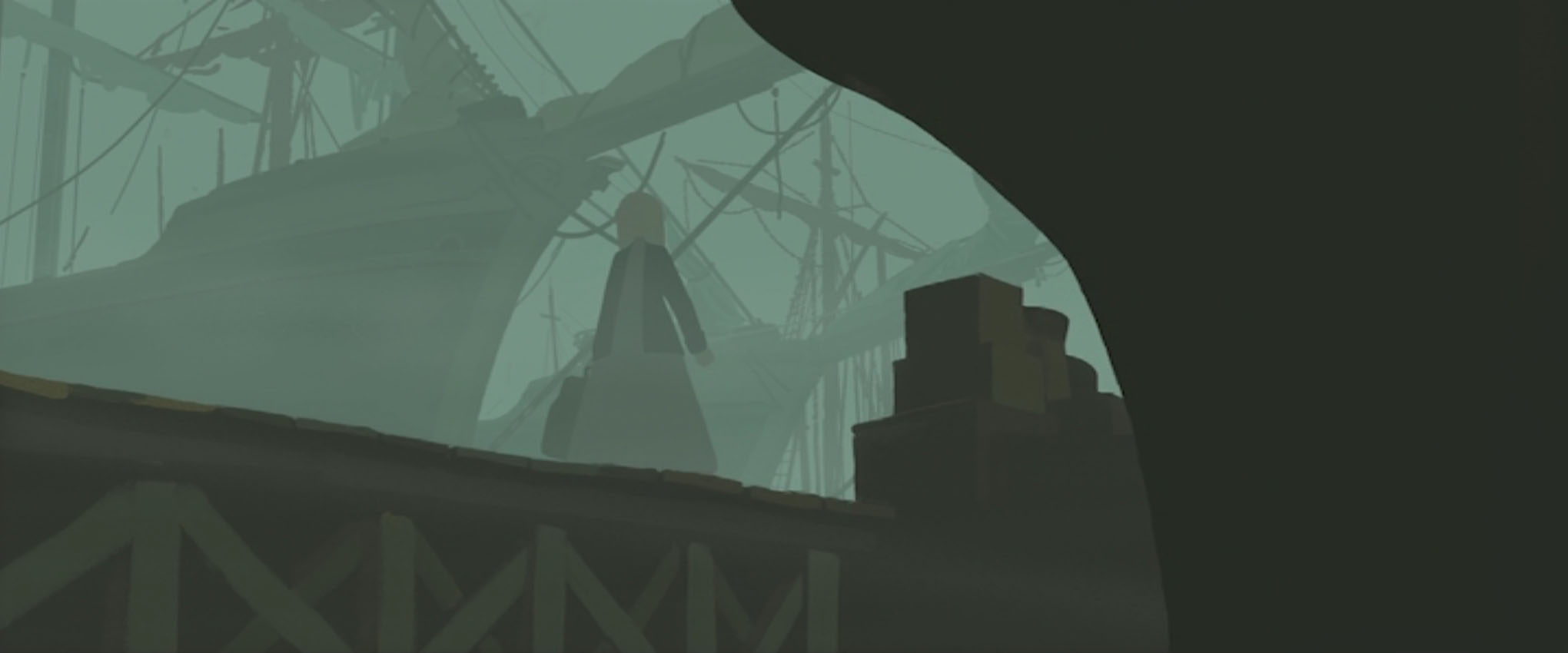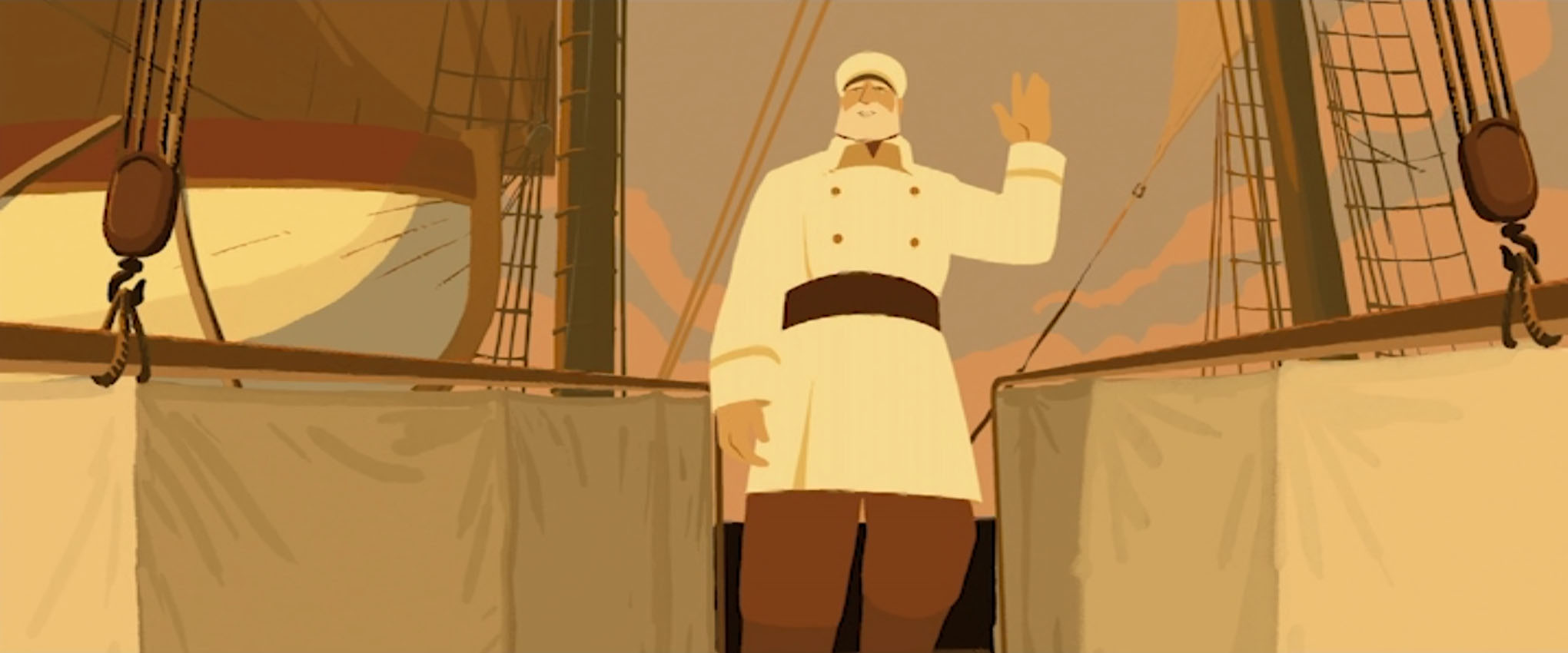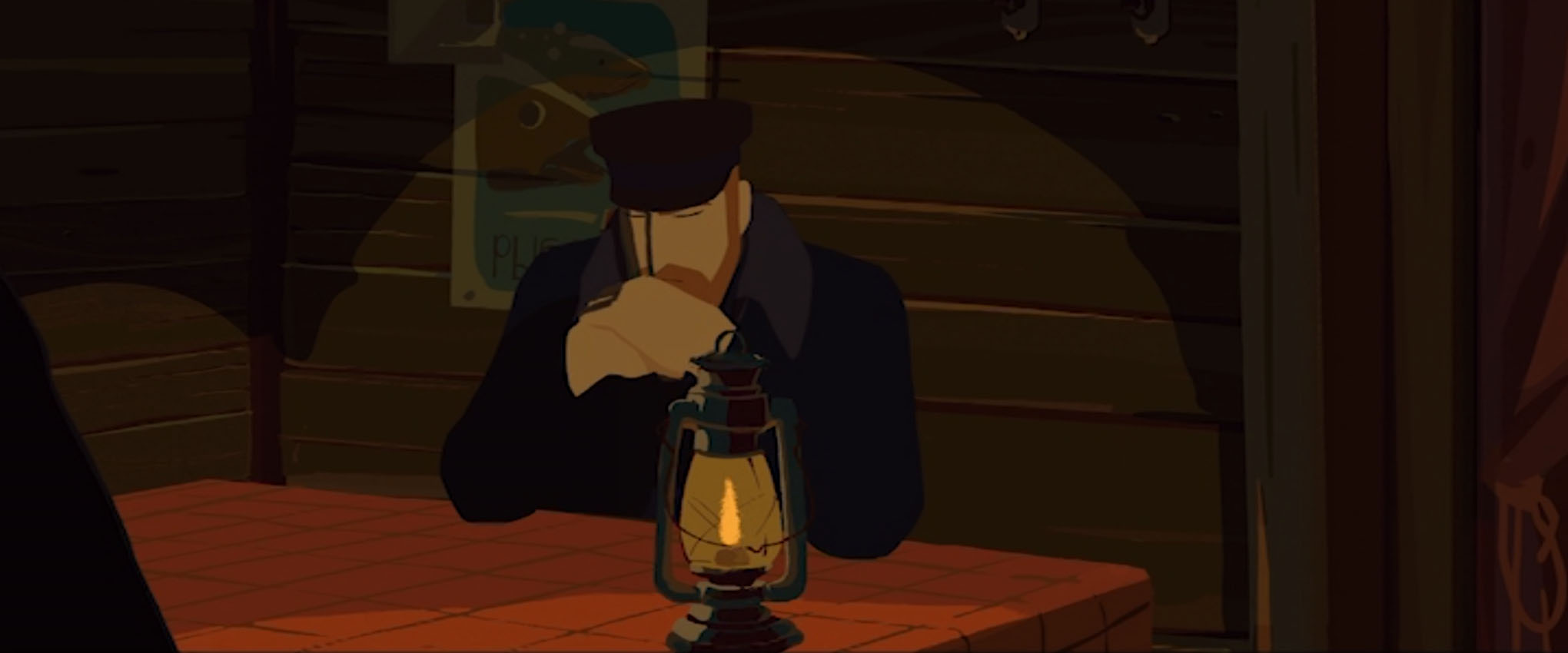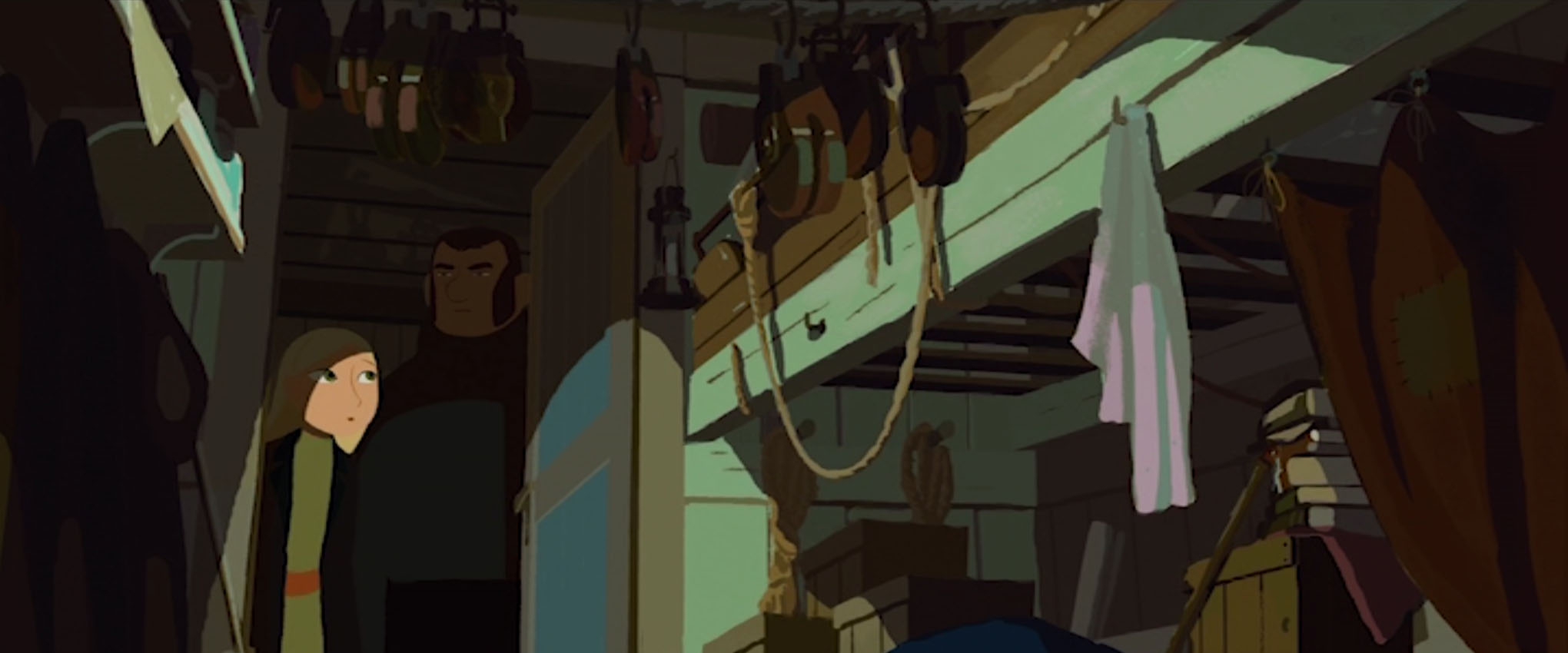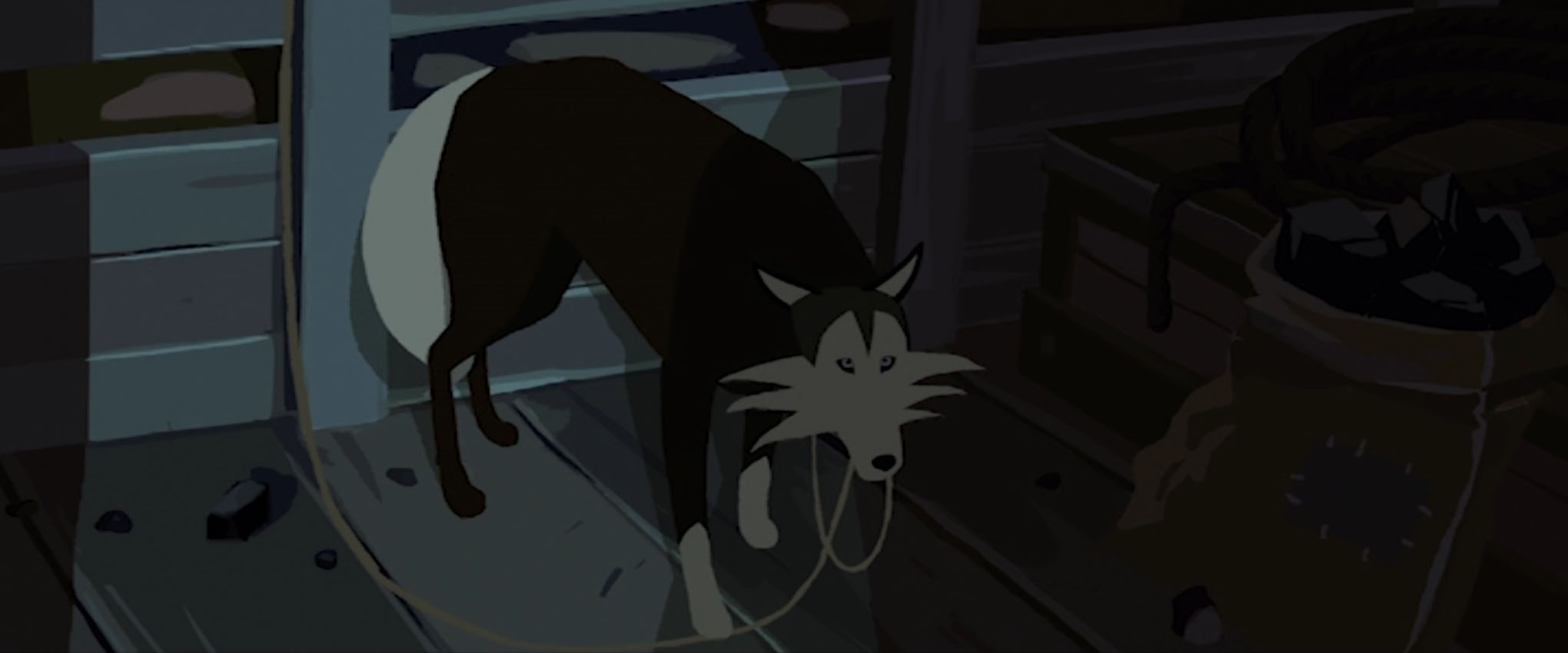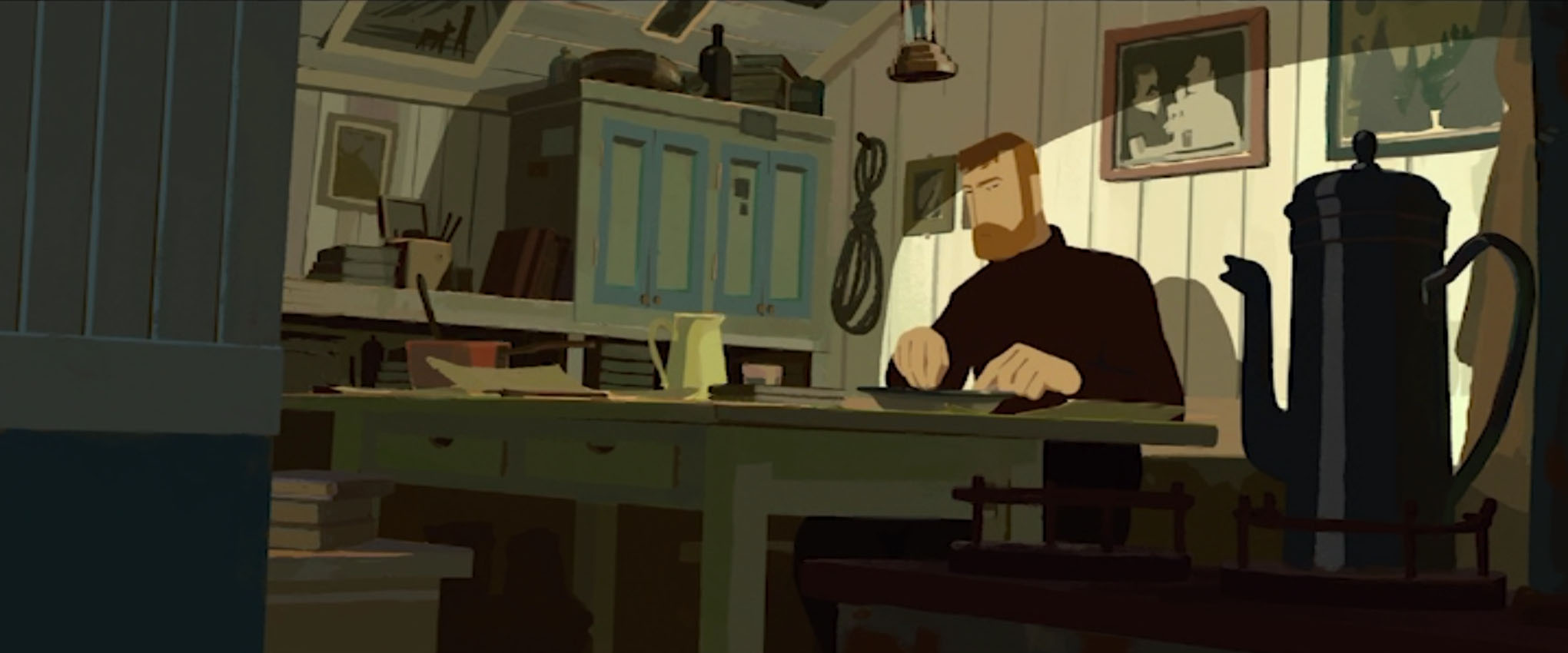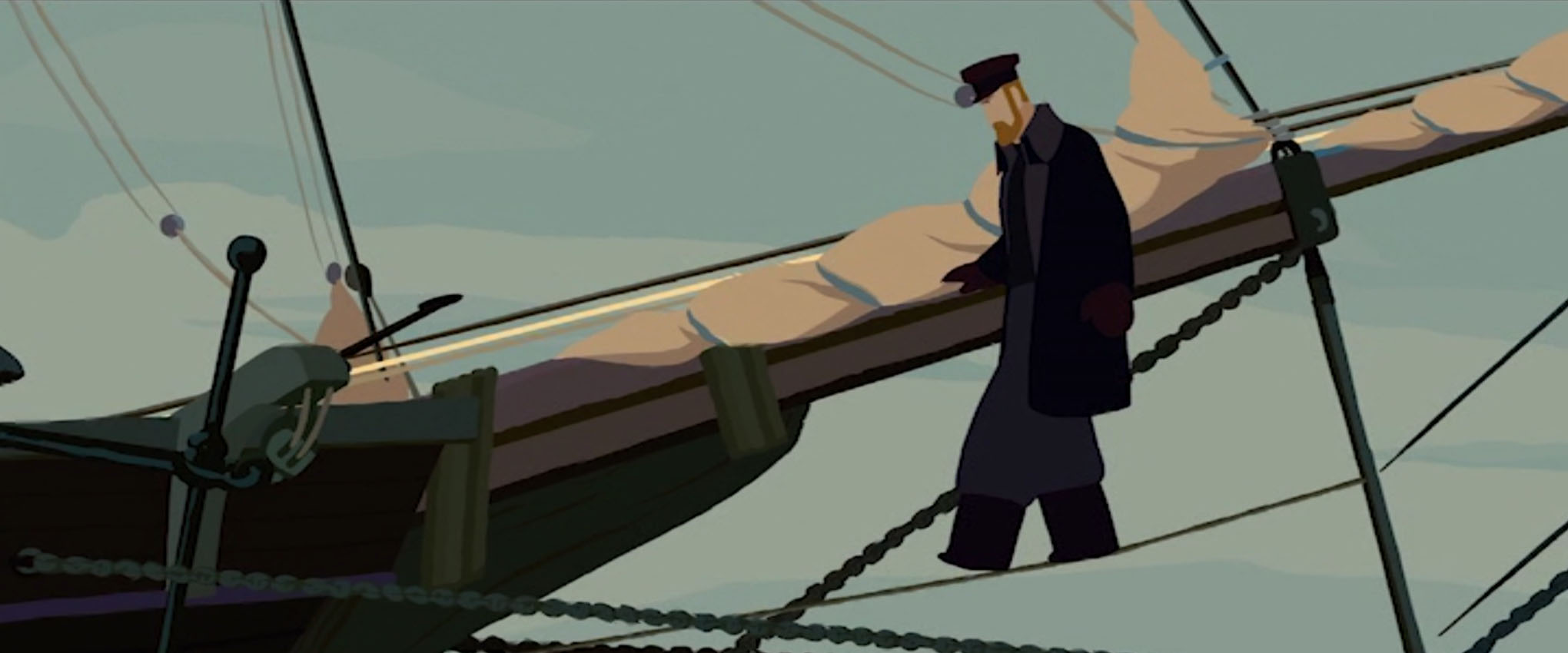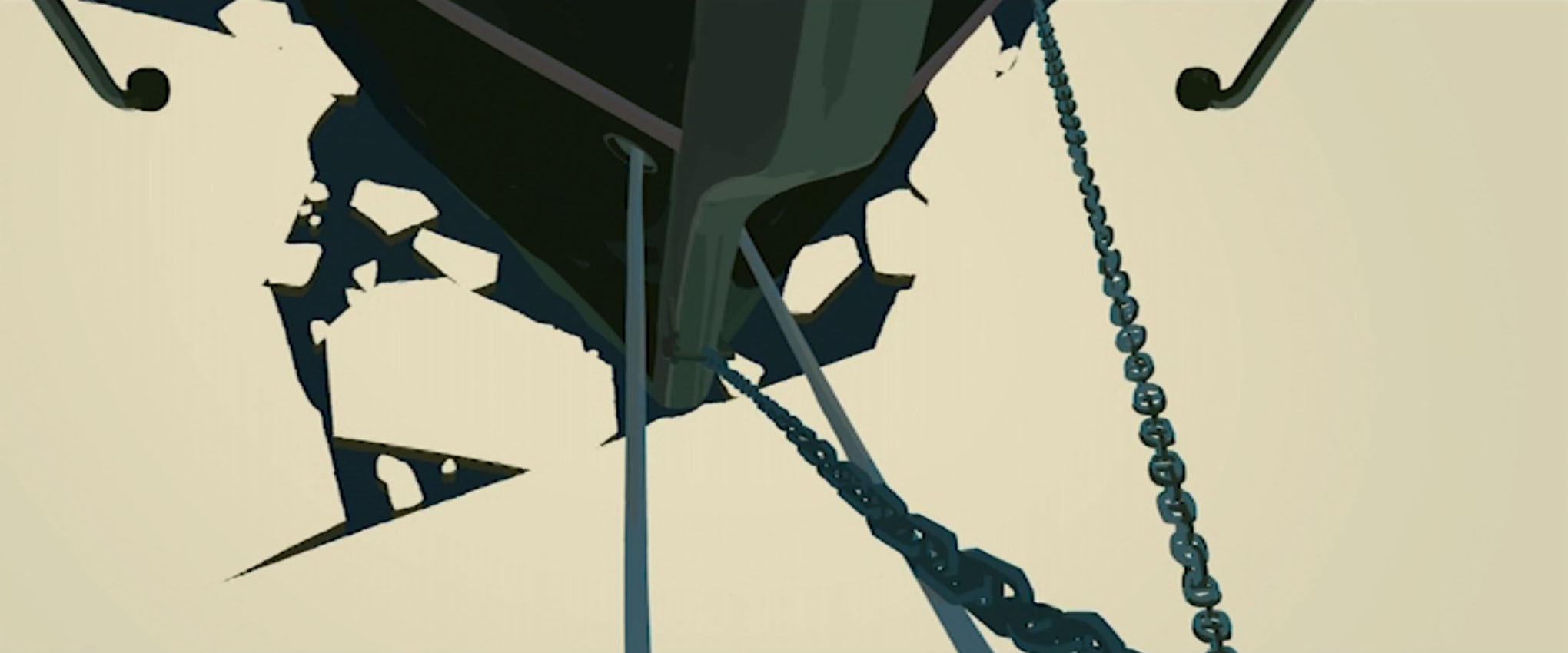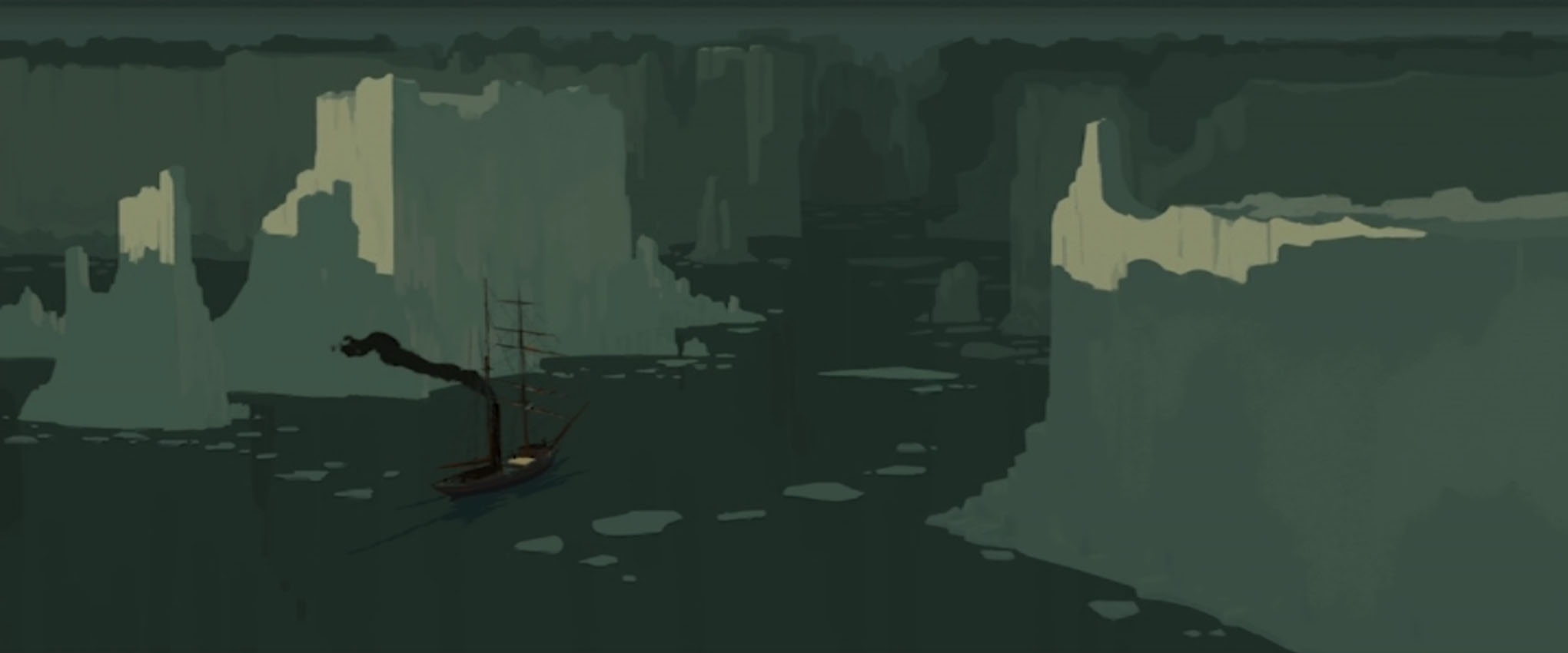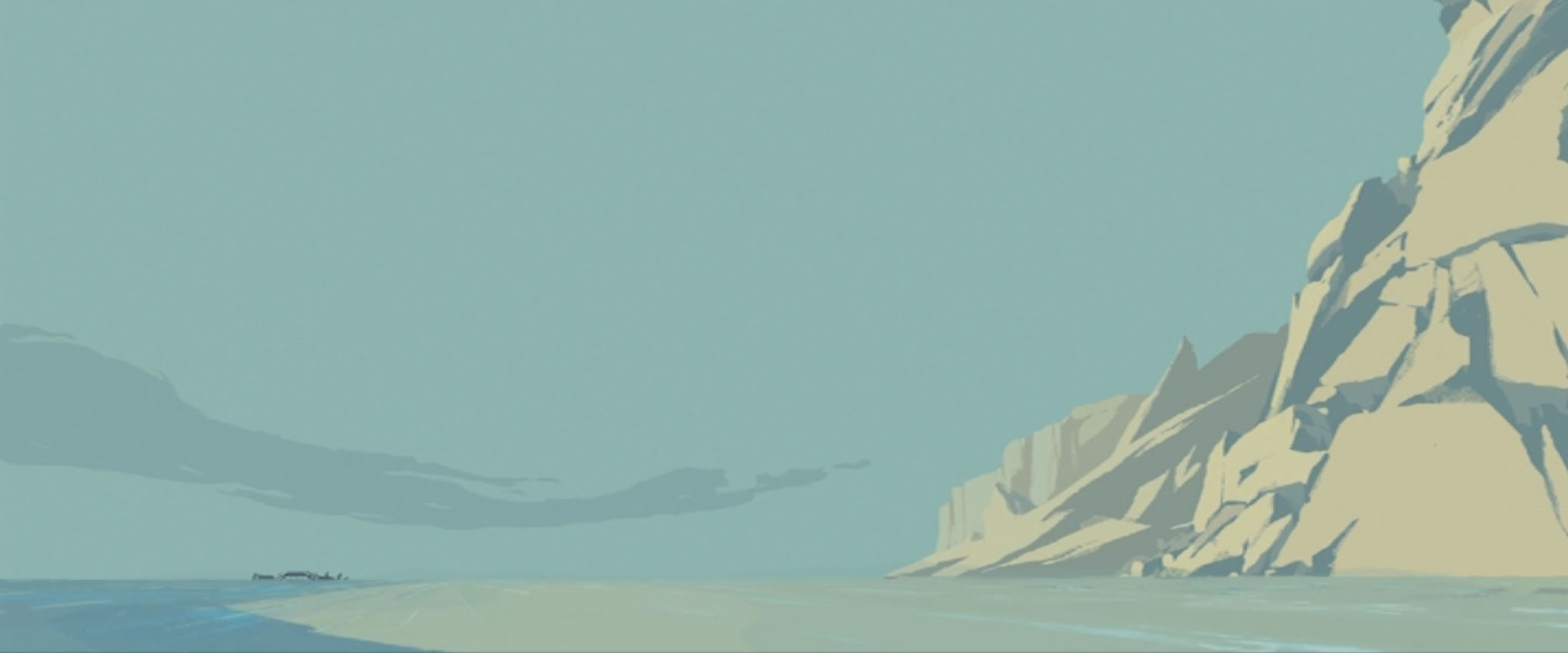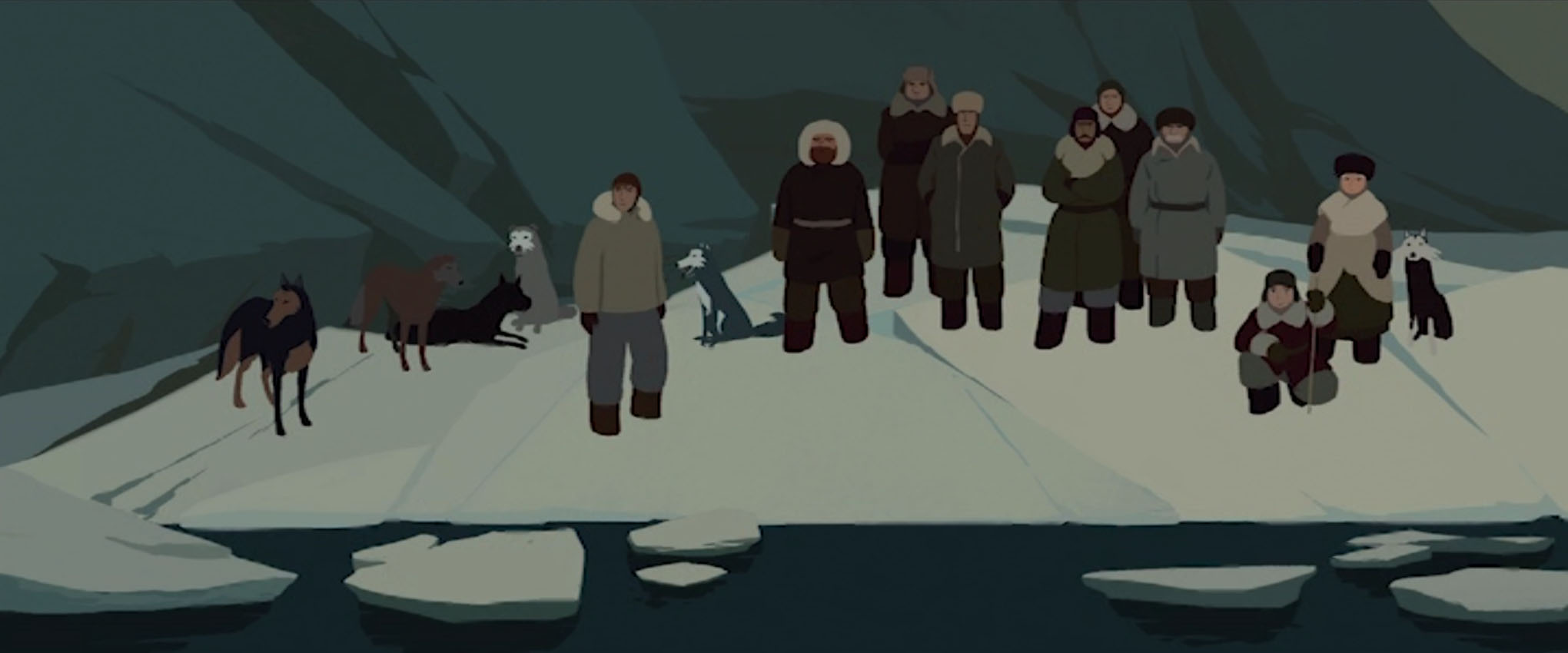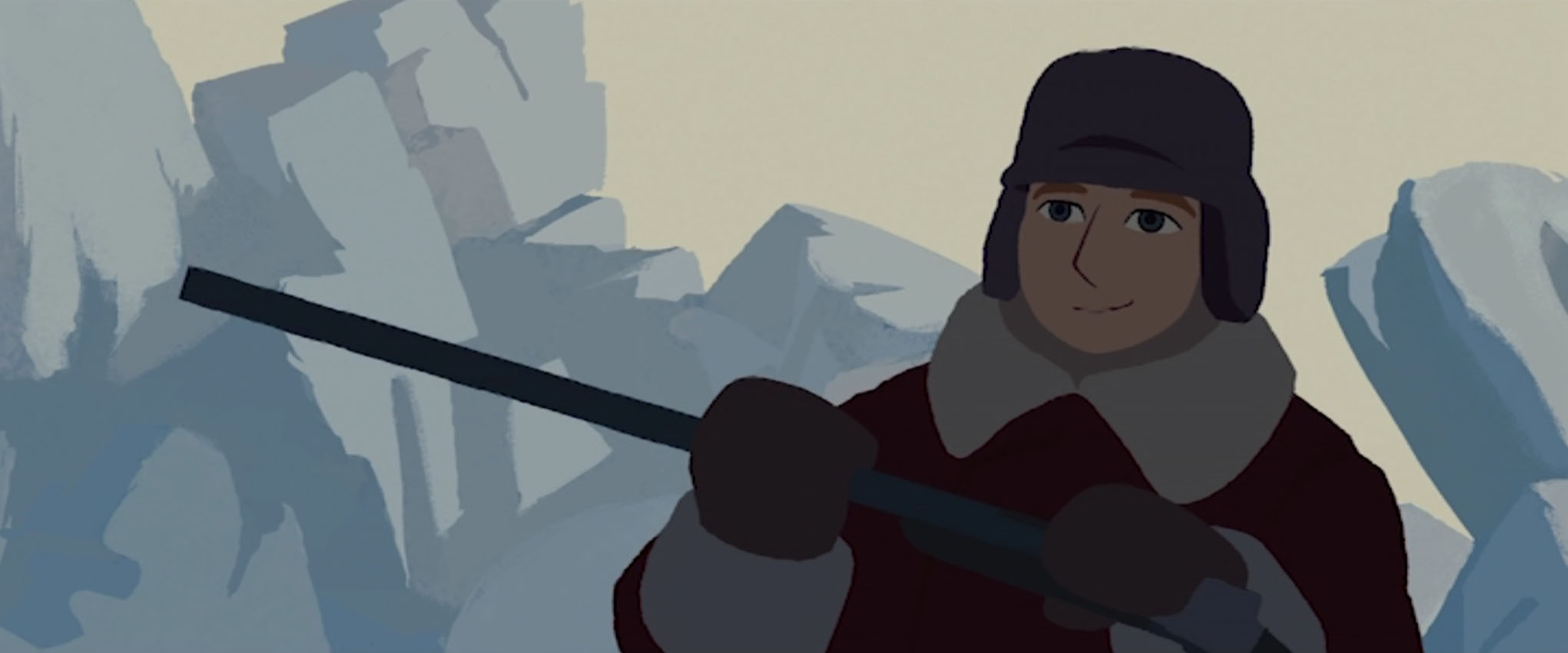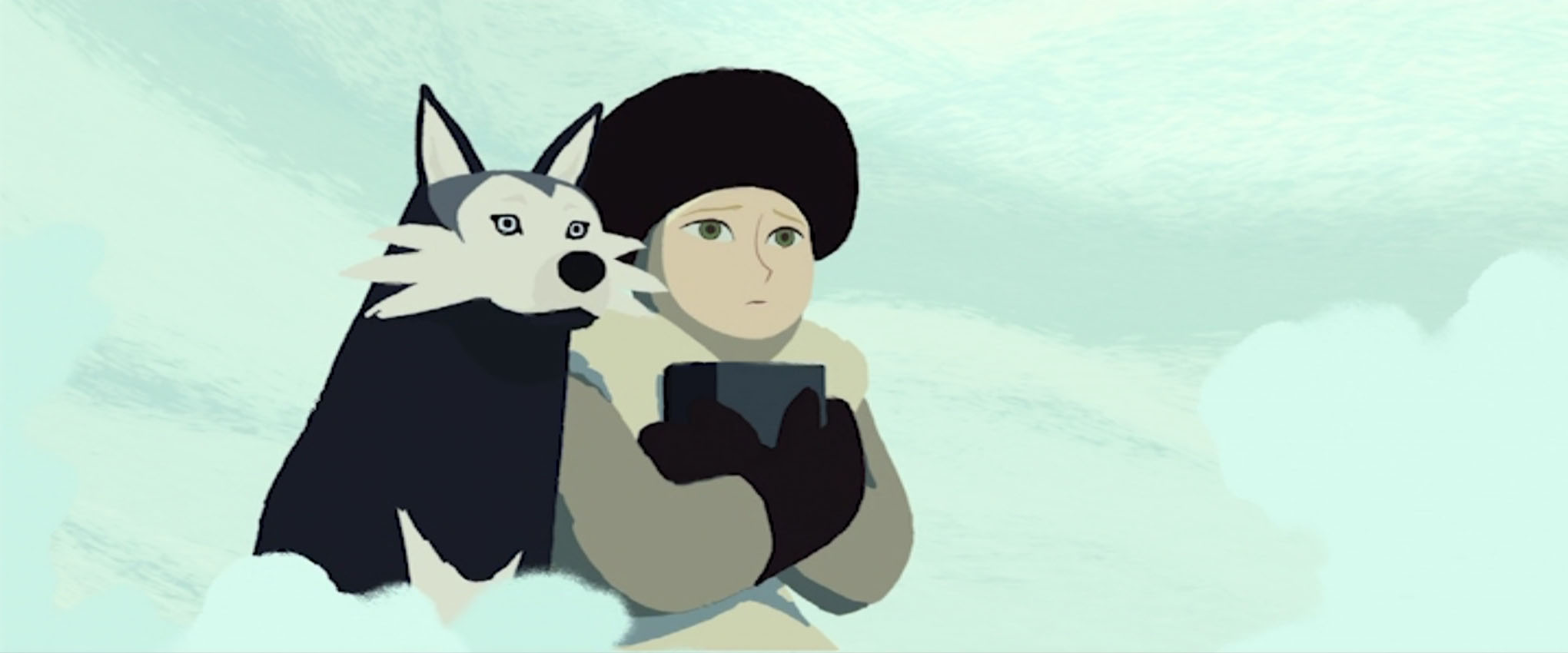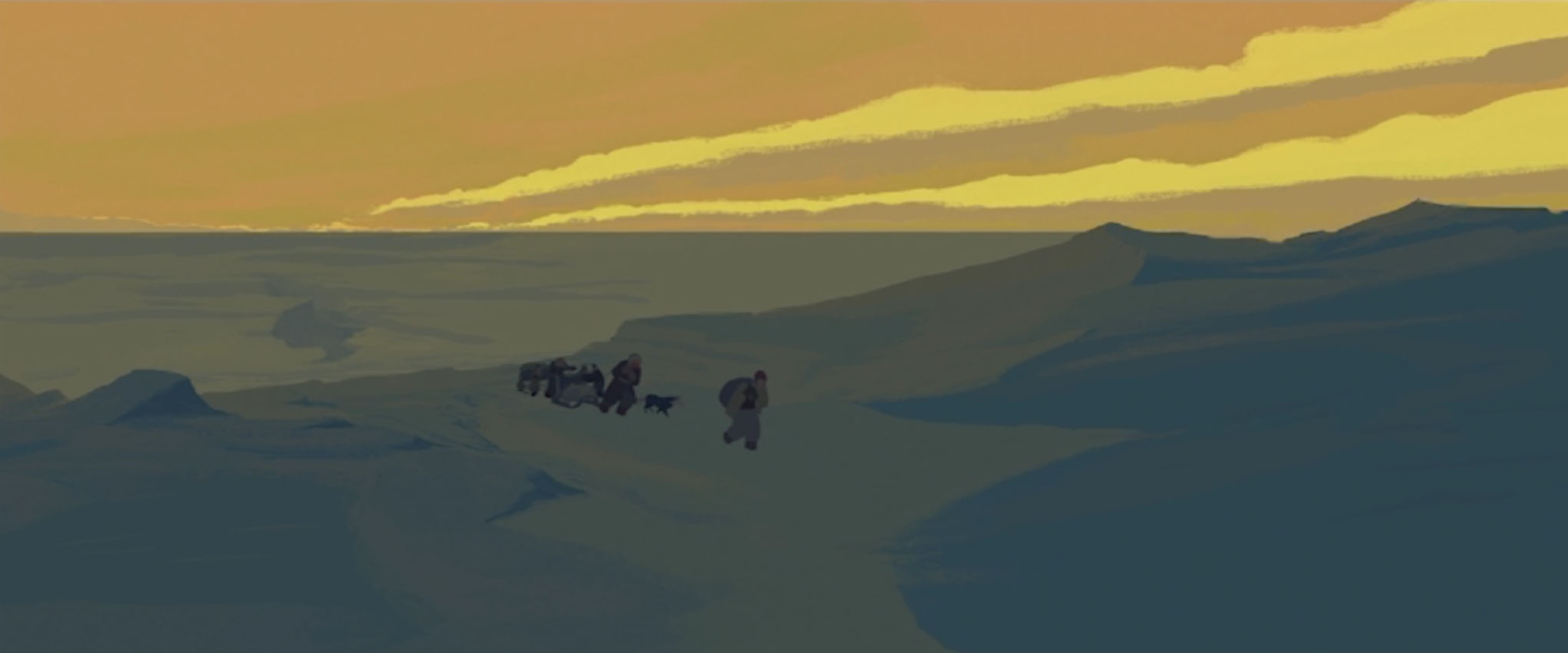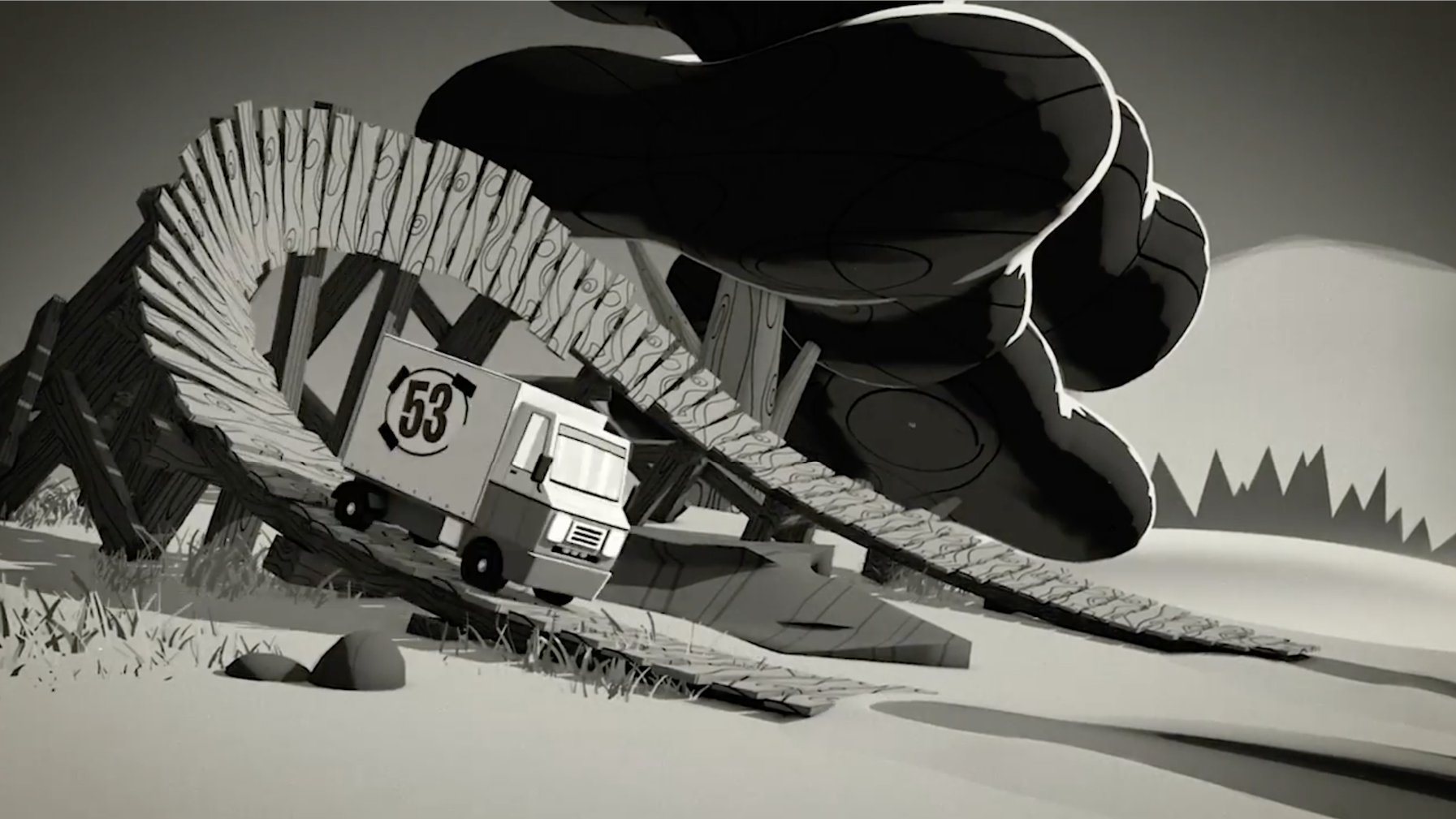Since writing up my thoughts on Long Way North, I had wanted to write about and share another animated movie with strong design choices that really appeal to my tastes.
The Little Prince and the Eight-Headed Dragon is a 1963 animated feature from the Japanese studio Tōei Dōga (which was later renamed Toei Animation). The film is known in Japan as Wanpaku Ōji no Orochi Taiji (わんぱく王子の大蛇退治) literally meaning “the naughty prince’s Orochi slaying”.
Perhaps this feature is best known outside of Japan as an influence cited by Genndy Tartakovsky for the art direction of the 2001 TV series Samurai Jack, and Yōichi Kotabe for the visual design choices seen in the 2002 video game The Legend of Zelda: The Wind Waker.
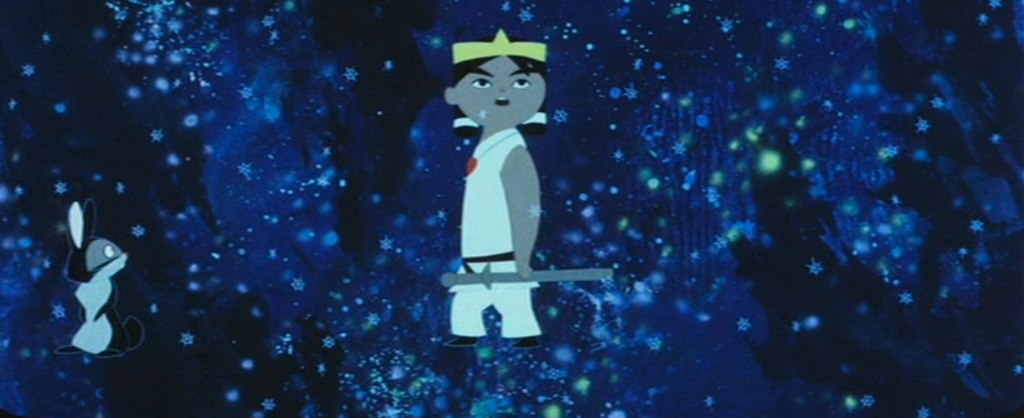
Unlike Long Way North, it’s a little difficult for me to find details on those who worked on this film, or any history in regards to its development. The character animator of this film is Yōichi Kotabe, whom I have mentioned already for his contributions to The Wind Waker.
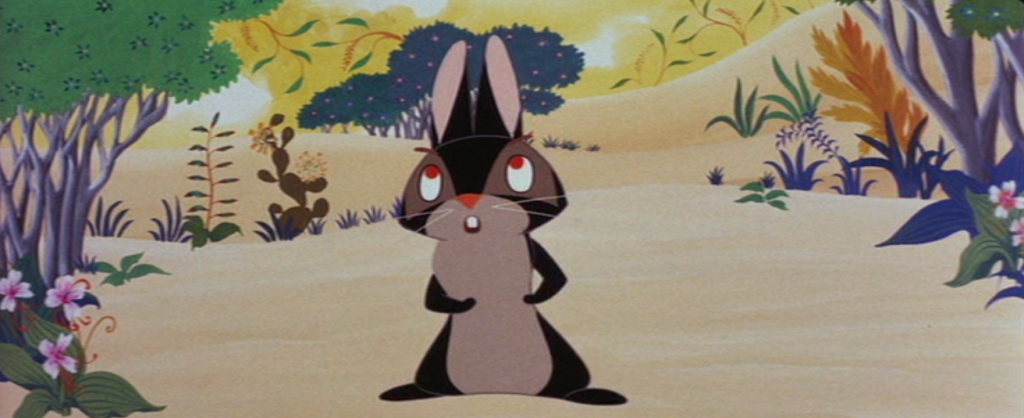
My copy of The Little Prince and the Eight-Headed Dragon is a Japanese DVD (sans subtitles in any form). This copy isn’t cleaned up at all; any artefacts and damage from the original source seem to be intact. It’s possible to enjoy the film grain in all its glory! (In all seriousness, the practice of digitally scrubbing film grain from old animated features isn’t something I think much of; the grain is part of the medium, and it comes off to me as a ridiculous betrayal to present the work as something it is not.)
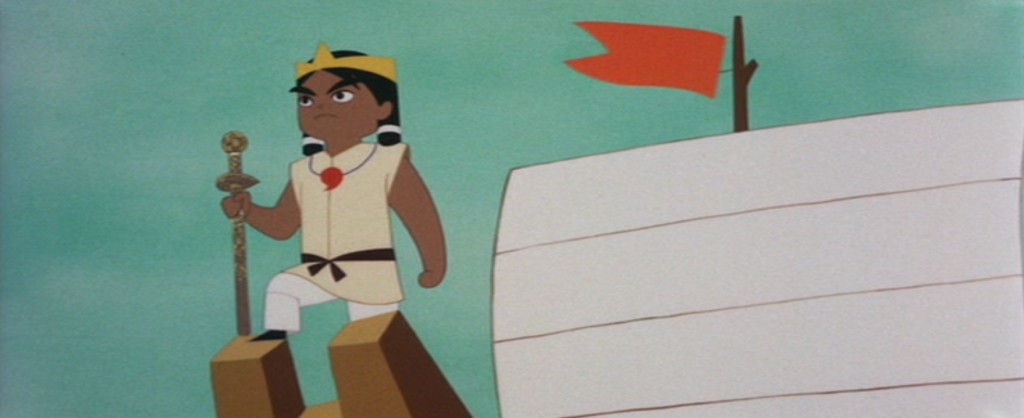
The film’s most important characters and events are derived from Japanese mythology. If you’re familiar with any gods from Shintō religion, you’ll notice their portrayal here is with much artistic licence. In the 1963 film, the protagonist, prince Susanō, is represented as a young boy, rather than an adult, most likely for the child audience to better understand or empathise with his actions and motives.
A brief summary of the film:
Prince Susanō is the youngest child of the creation deities Izanagi and Izanami. When his Izanami dies, the prince resolves to travel to heaven to bring her back.
Prince Susanō constructs a boat, and leaves home with his rabbit friend, Akahana, in search of his older siblings, thinking they can aid him in reaching their mother. Susano’s brother Tsukiyomi, and sister, Amaterasu, are of no aid, however. They have accepted their mother’s ascent to the afterworld.
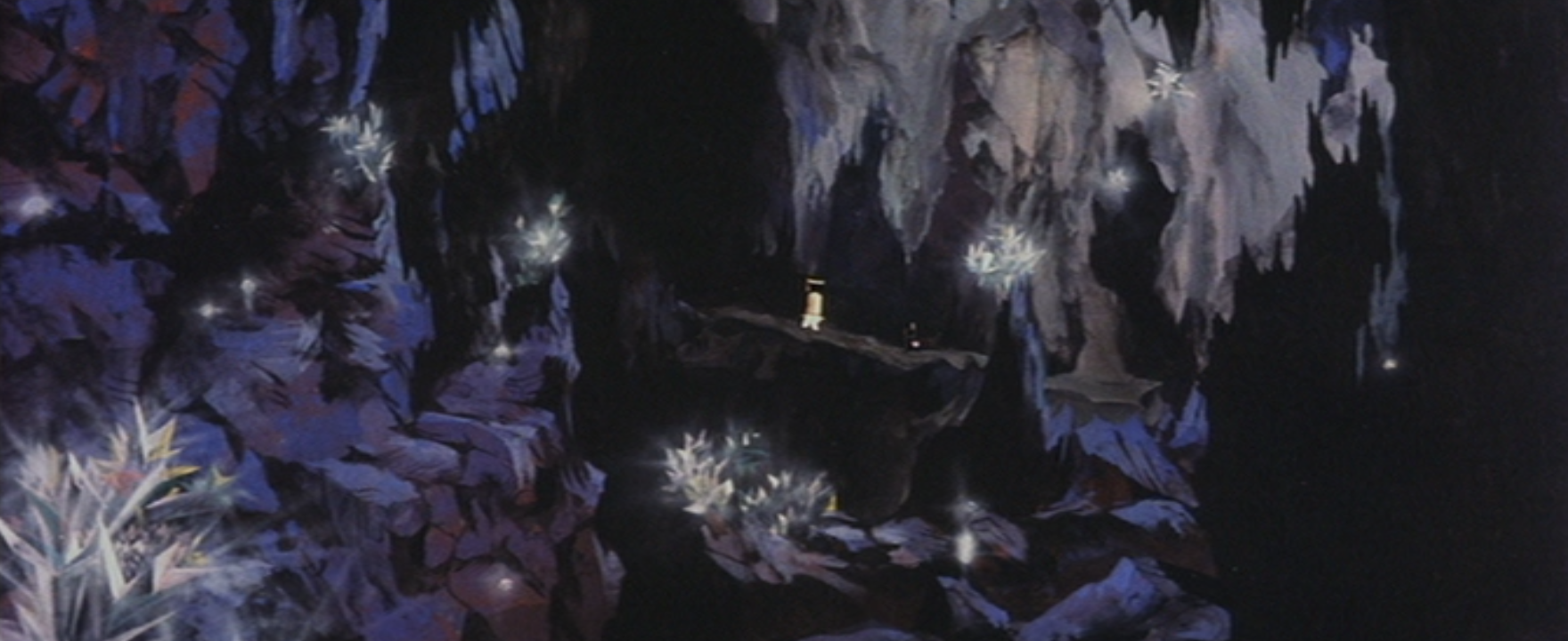
Making friends during their travels, the gentle giant named Titanbō joins Susanō and Akahana. The trio eventually arrive at a village suffering under the grips of a monster. The village’s young maiden Kushinada is next in line to be devoured as sacrifice to the eight-headed, eight-tailed beast, Orochi.
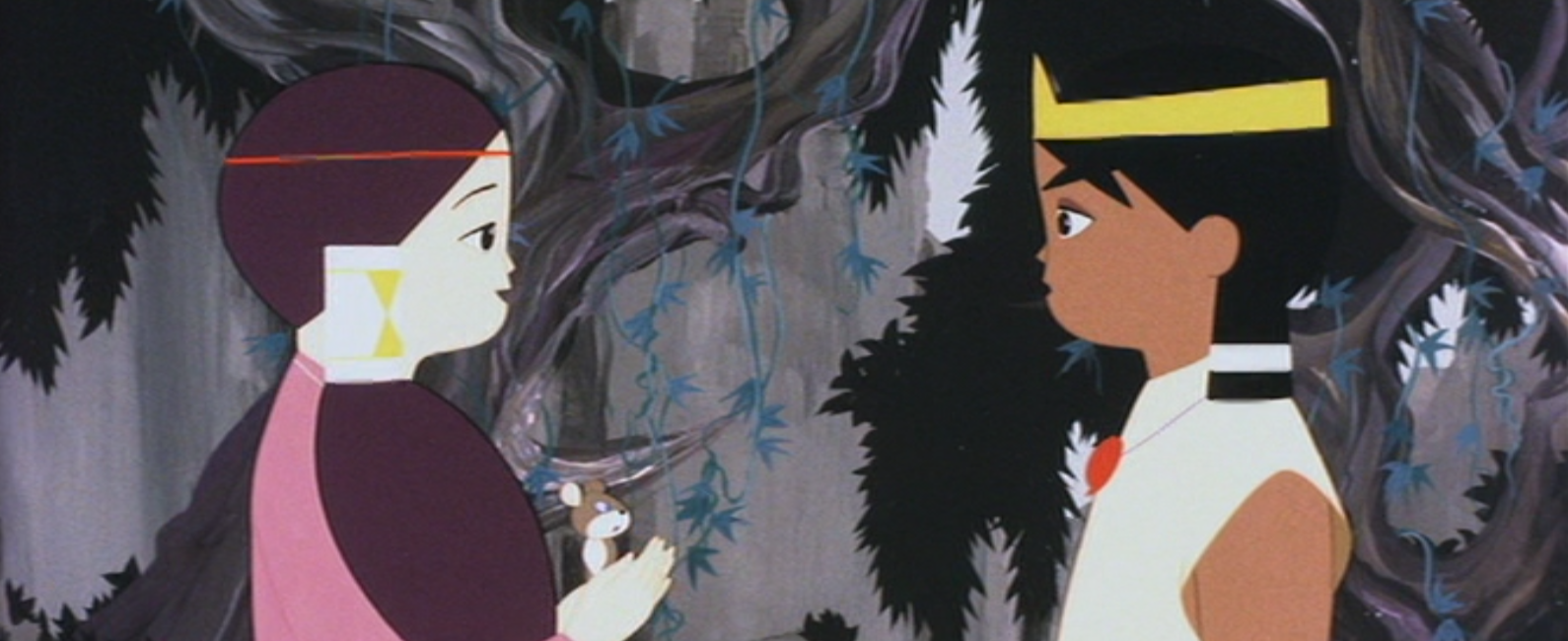
The prince is infatuated with young Kushinada, and so decides to rid the village of the hydra-esque Orochi. Susanō is willing to fight to the death with the monster!!
After a terrible battle, Susanō bests Orochi, and is greeted by his mother up in the heavens, who praises him for his good deeds before leaving him. The prince finally accepts that he will not be seeing his mother again.
One thing that stands out about this movie compared to features released by Toei, is the much more angular character designs, and the abstract environments that are stripped back with many elements represented as symbolic shapes.
The economy seen in the character designs to me, feel very modernist, and very confident. A keen viewer will notice that most characters have coloured outlines, rather than black outlines, which gives a softer look to many of the designs.
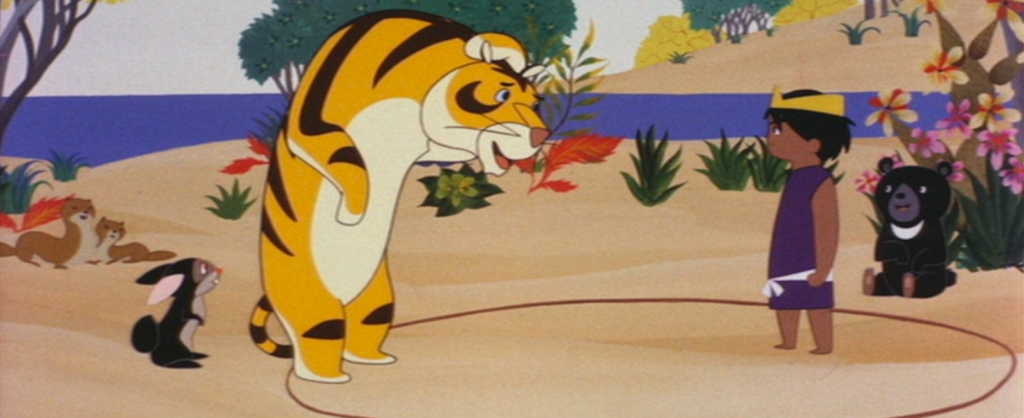
While the film was created for and marketed to children, it is still a showcase of some experimental sequences and unique design visual choices for cel animation that I can only better appreciate and understand as an adult.
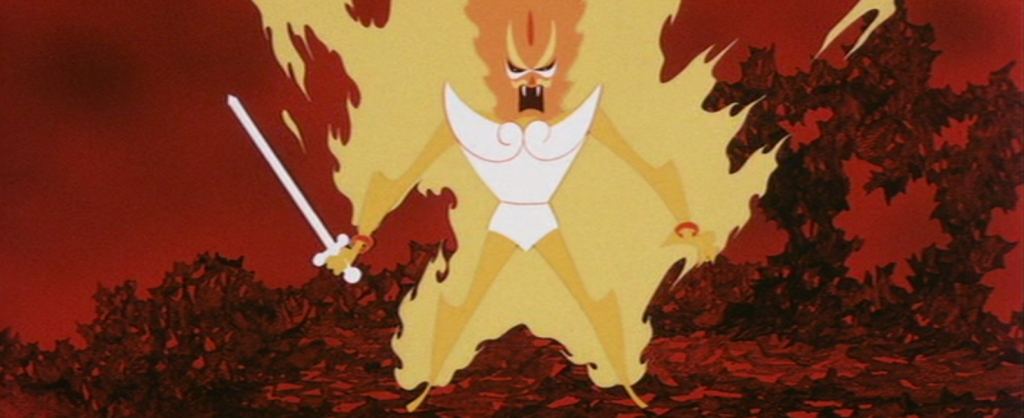
Sharing a lot of screen shots only does the movie so much justice… Really, you have to see The Little Prince and the Eight-Headed Dragon in motion to appreciate the skills and craft behind the animation!
The video embedded below is a sequence that presents great abstract character design and colour usage. As I have taken the video from sakugabooru, it is also an example of sakuga. While sakuga (作画) literally means ‘drawing pictures’, animation fans will use it to define fluidity in a sequence that uses little to no trickery or animation shortcuts.
The original Japanese film isn’t streaming anywhere, as far as I am aware. (Tell me if you know otherwise!) The only way to own a copy of the original film is to buy it from Japan. If you’re willing to watch this feature in any from, the English dub that was produced by Frontier Enterprises back in 1964 is available to watch on the Internet Archive.
I’d like to share more animated features, or even animated shorts on my blog in the future! Overseas works, and older films are particularly interesting to me for their (most often unfamiliar) design principles. I believe it’s good to be ‘challenged’ every so often by work that presents itself in a way you’re not expecting!
